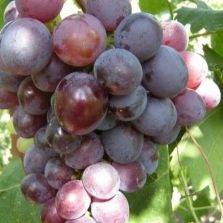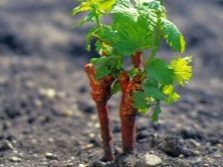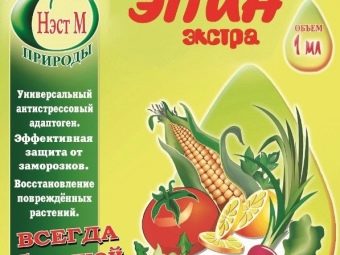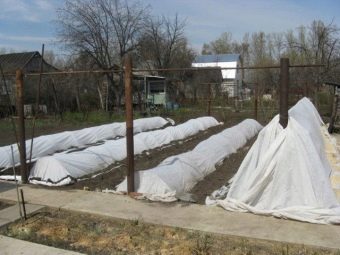Growing and caring for grapes: step-by-step instructions and tips for beginners
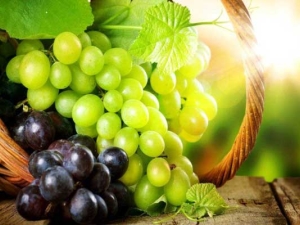
Not every gardener, and especially a summer cottage-beginner, undertakes to grow grapes in his plot.This seems to be a troublesome business, and a good result is not always guaranteed. Indeed, many have rooted the idea of this culture as a very capricious and especially southern. But at the moment, a large number of grape varieties that can grow in many regions of Russia has been bred. It is only important to determine the appropriate type of this berry crop and learn the rules of its cultivation.
Which grade is better to choose?
When choosing suitable for growing grapes on your plot, you should be well acquainted with the description of each species. Varieties at the moment there are a great many. Each of them has its own universal properties and requirements for cultivation conditions. First of all, pay attention to whether this type of grape is able to grow in your region.
The easiest way is to choose grapes for cultivation in the Kuban and in the southern regions with a hot climate and a longer summer. The weather conditions of this area are most natural for the vine crop. However, there are many varieties commercially available that are suitable for cultivation in the Volga region, the middle lane and areas of high risk farming.
In the characteristics of the variety pay attention to the time of ripening berries. The period of ovary and ripening of fruits should coincide with the warmest season in the growing area. If the berries ripen at a low temperature or during the rainy season, the harvest will almost certainly be lost. Grapes well poured into a hot dry season.
Find out how cold resistant the plant will be. In the middle zone, snow is inevitable and the temperature drops to minus. Not every variety is able to move without additional shelter and insulation. Conditions of wintering culture is very important to know in advance to ensure the safety of the plant in the cold season. However, gardeners with experience in growing grapes, do not be lazy to cover any grape variety. It will not bring harm, but it will always provide additional protection against freezing of the roots.
For beginners, it is better to choose the most frost-resistant varieties with early ripe fruits. This will allow to insure against mistakes and losses of the harvest in the first stages of the development of viticulture. It is also worth knowing how resistant a particular variety is to diseases.
At the final stage it is necessary to determine the desired properties and taste of the crop. Think about the purposes for which you are planning to use grapes. This can be making homemade wine, gardening gazebos, fresh use, preparation of juices, jam or jelly.
Having studied the above points and having decided on a set of the necessary properties and characteristics, it is much easier to make the right choice. In addition, at least 10 thousand varieties are represented on the market only for the Volga region and the middle lane.
The most popular types of grapes are:
- For novice gardeners fit unpretentious grapes "Amur". Culture feels great and gives a stable harvest in the conditions of the Leningrad region and the Moscow region.
- Also undemanding in grade care "Aleshenkin", "Agat Donskoy", "Platovsky", "Crystal".
- "The beauty of Nikopol" - ultra early grapes with excellent taste properties.
- For those who plan to use the fruits mostly fresh, we can recommend quickly ripening and very sweet varieties. "Early Tsiravsky" and "Liepaja Amber".
- Grapes are especially useful for baby food. "Beauty of the North". It contains a large amount of very useful folic acid.
- Sort "Isabel" often cultivated in the Volga region, Moscow region and even in slightly more northern areas. The plant gives a tall sprawling shrub, abundant fruits (about 50 kg of berries from one vine). "Isabella" is an early ripe frost-resistant grade.
- Hybrid table variety "Nina" It is undemanding in leaving and is very cold-resistant.It withstands even long-term decrease in temperature to -25 ° C. The berries are very juicy, have a pleasant acidity and tartness.
- Grapes "Arcadia" very high-yielding and early ripe. Large clusters of berries form on the plant. The fruits do not contain a lot of sugar, but are very juicy and have a pleasant nutmeg flavor. "Arcadia" can be successfully grown only in the southern regions, as it does not have good resistance to long minus temperatures. From the berries of this variety is excellent homemade wine.
Despite the fact that the variety of tastes may cause the eyes to disperse, at the stage of mastering the cultivation of this crop it is better to choose no more than 2-3 varieties for simultaneous planting.
How to plant?
Next you should touch on the issue of proper planting of grapes. In many ways, the further development of the fruit bush will depend on the rooting of the seedlings. So, when planting, it is highly desirable to provide the most favorable conditions for the fastest survival of the plant. In this case, the root system will develop rapidly and actively.
Planting seedlings is possible before winter or spring. In the case of the autumn planting, a high earthing up of the plant is immediately carried out. The soil around the seedling is plentifully powdered with peat and sawdust in a layer of 2-3 cm.
Short cuttings of grapes (up to 25 cm) penetrate the soil directly. Longer seedlings are buried under a slight slope.
Choice of place
The site where the grapes will be planted should be well lit. Badly affect the plant wind and drafts. From these factors negative for the plant, the landing site must be protected.
The best option for growing in the country is to land in the ground along the wall of any structure, fence or fence. In this case, the grapes should be on the south side.
Many grape varieties feel great in the greenhouse. In the case of greenhouse cultivation, it is important to remember that the ventilation of the structure should be only through the upper vents. Draft should not disturb the roots and vines.
Land preparation
The culture is most suitable for growing in sandy soil or in black soil. But in general, the grapes are not too whimsical in terms of soil quality. The only important condition is sufficient drainage and the absence of stagnant moisture. Therefore, planting the plant should not be carried out in clay and loamy soils.
With high acidity of the soil (pH below 6) it will be difficult to grow a good crop. In this case, it is advisable to add a small amount of lime. Approximately 200 g of lime powder should be evenly scattered on 1 square. meter of land and well plow through the top layer of soil.
Description of the process of planting seedlings:
- At the selected site you need to dig a hole with a depth of 0.3-0.5 meters. The width and depth of the planting hole depend on the degree of development of the seedling's root system.
- The soil thrown out of the pit should be mixed with organic fertilizers. This will serve as an additional feed for the young plant. You can also add mineral dressing to the ground.
- At the bottom of the prepared pit need to pour a layer of gravel or gravel, which further provide drainage of the soil. A small amount of soil mixed with organic matter and fertilizers is poured over this layer.
- The simplest and optimal landing scheme: 1.2-, 1.5 meters between the bushes, 40-50 cm from the support (walls, fence, fence).
- Before falling asleep with the soil, the roots of the seedling should be lowered into a special nutrient solution. Among experienced growers, he is called "talker". Preparing a solution according to this recipe: 1 teaspoon of humate is dissolved in 10 liters of water, clay is added to the mixture to obtain the consistency of liquid sour cream. The roots are processed with such a composition and then, without waiting for drying, are located in the hole and sprinkled with prepared soil.If a grafted bush is planted, it should be ensured that the grafting site remains 5-8 cm above the soil level.
- After this, the basal zone is gently rammed. The plant is watered abundantly with warm water. It is recommended to mulch the soil around the seedling. To do this, you can use sawdust, dry hay or compost.
With the subsequent development of the vine, the correct formation of a bush will require additional support. For this purpose, parallel to the row of plants, you can pull a thick metal wire at a height of 40-50 cm above the ground. The second option is to fix a thin long beam or trellis at the same height.
Watering
You need to water the culture 4-5 times per season. In the rainy summer watering is not required. Grapes do not like stagnant moisture in the soil.
The first time to water the plants should be in the spring after removing the winter shelter. Watering is carried out with warm water in the amount of 2-3 buckets per root.
The second time you need to water the grapes at the very beginning of the flowering process. The third watering is carried out with the appearance of berries on the bushes of the ovaries. If the summer is very dry, you can moisten the soil under the vine one more time. But this must be done before the berries begin to acquire a ripe color. In the period of ripening grapes do not need to water the plants.
The last watering is carried out in the fall, 7-10 days before hiding the roots and shoots in winter.
Top dressing
Grape culture very well takes mineral nutrient compositions and organics. It is believed that the young, not fruit-bearing shrub lacks those fertilizers that are applied to the soil during planting. If the plant develops normally and there are no visible signs of weakening or illness, then the first 3-4 years after planting additional feeding is not required.
Manure, bird droppings, and peat can be periodically laid from an organic top-dressing into the soil for an adult plant. Ammonium nitrate and urea, potassium salt, superphosphate are used as minerals feed. It is most convenient to use mineral complexes for root feeding: “Florit”, “Master”, “Mortar”.
Organic fertilizer is best carried out after removing the winter shelter. And with the first watering make potash and nitrogen substances. Before flowering, it is desirable to water the grapes dissolved in water with manure or droppings (1 part organic to 2 parts water). During the period of fruit ripening, fertilizing is done with phosphate and potash fertilizers.
Care rules
Usually grapes saplings take root when choosing the right place and following the rules of planting. However, the further development of the bushes and good fruiting will depend on the care of the plant. Moreover, in the case of grapes, the cultivation of adult plants requires special attention.
Due to the longer summer and the lack of winter prolonged frosts, growing grapes in the southern regions is easier. For all areas of cultivation, the following seasonal pattern is recommended.
In the spring
The first procedure, which is carried out with grapes after the winter, is the removal of a warming winter shelter. Winter-resistant varieties can be opened when the temperature stops falling below -5 ° C. If, nevertheless, there is a threat of severe frosts, it is possible to open the grapes in part by making it ventilate. With the advent of the first buds, grapes can be opened completely. If the variety is not particularly frost resistant, it is better to err and leave it covered longer.
Frost-sensitive varieties can be further protected with Epin. The composition is diluted in water, the resulting solution is sprayed with stems and shoots 1-2 days before the expected decrease in temperature. The solution will protect the bushes about 10 days after treatment.
With the active and rapid melting of snow in the warm spring in the soil and on its surface water can stagnate.If there are puddles around the roots, you need to scoop them up and dig a groove for further water drainage. Spring works also include pruning of damaged, diseased or broken shoots. With this it is better not to tighten and cut the branches to the active development of the kidneys. After wintering the vines need to re-tie. In the first three years after planting, young bushes are tied up on a wire stretched parallel to the ground. The height of the tension changes with the growth of the vine in height. Adult plants will need to build a higher and stronger support.
It is recommended to carry out preventive sanitary spraying of the bushes of grapes with the composition “Nitrofen” in the spring. The drug (200 g) is diluted in 10 liters of water. Shrubs richly processed composition. If you find signs of disease or traces of pest damage, the plants need to be treated without waiting for the summer season.
Before you carry out the first watering, the soil around the roots must be carefully dig and well loosen. This will help the soil to warm up better in the sun.
With the first irrigation, nutrient mineral fertilizers are applied. Organic matter is laid in the soil under the bushes. Also in the spring months, it is best to inoculate a plant if it is necessary.
Have newly planted seedlings spend pasynkovanie. Extra young shoots and buds are removed. Thus, the formation of the vine. After the start of leaf blooming, the bushes are sanitized with a fungicide.
At the end of spring, new grown branches are also tied to a wire or other support. The end of May is the time of the second fertilizing. Most grapes by this time begin to give the first color. At this time, it is best to introduce a complex of mineral substances into the soil. With the appearance of inflorescences, it is worth assessing their density and quantity. In order not to overload the branches, the excess flowers are removed.
Summer
In the summer, there is an active growth of the shoots of the vine. Therefore, we must make sure that the grapes do not grow into height. When pulling shoots above 1.5 meters, they should be pinched. The optimum height for a vine is about 1.7 meters. During the summer months, it is necessary to monitor the development of the stepsons and to trim them in a timely manner. Thanks to this procedure, nutrients will not be spent on excess growth. Also carried two more top dressing bushes. The first is held after the end of the flowering period. The second summer fertilization is carried out at the very beginning of ripening berries.
In the second half of July, it is desirable to cut the leaves, which close the brush with berries from the sun. Grapes ripen faster, having access to sunlight for several hours a day. In the hot summer period, plants can be attacked by pests or diseases. The vine should be inspected for a healthy appearance of ovaries, stems and leaves. If necessary, the bushes are treated with medical compounds and solutions against harmful insects.
With fairly good and warm summer weather, the grapes bear fruit in mid-August. Particularly early varieties can give a quality crop in the last days of July. Bunches with ripe berries gently cut with scissors.
In the autumn
After collecting the fruits, the main task in the care of the grapes is to prepare it for the coming winter. During this period, the plant significantly weakened and exhausted, since all the forces were thrown to the ripening of fruits. In the autumn, the last season is supplemented with organic matter mixed with ash. Also with the last irrigation mineral nutrients are added.
If the bushes have signs of disease, sanitization is required. Do not leave the fight against pests and diseases of winter frosts. Before the onset of perceptible cold weather, they can greatly hurt an already weakened vine.
After the bushes lose foliage, a formative pruning of shoots is carried out.It is important to hold it before the first night frosts. Otherwise, the branches will become brittle, and accurate gentle pruning will be impossible.
The last stage of the autumn works is the shelter of bushes to protect against frost. Stems coming from the roots, high up the ground ground. Pruned branches are tied and folded as close as possible to the ground. Bending shoots should be carefully, avoiding breakage of branches.
The main shelter is fir fir branches. After the snow falls, a small snowdrift is thrown over the fir branches as an additional “cap”.
Recommendations
It will not be superfluous to supplement the basic rules of caring for the grape crop with several additional useful techniques and tricks, and as a reward you will receive a rich and high-quality harvest of tasty berries. When planting a seedling, many experienced growers drop a plastic or metal pipe with a diameter of 3-5 cm next to it. The lower end of the tube is deepened at the level of the roots of the plant. In the future, through this pipe is carried out watering and feeding the bush.
Experienced gardeners believe that this method of irrigation feeds the root system much better. The irrigation tube is used during the development of a young plant, in the first 2-3 years of life. Then the pipe is removed from the soil, and the vine is watered in the usual way. For the application of dissolved fertilizers, it is recommended to make a circular groove in the root zone. The distance from the stem to the annular depression is 15-20 cm. Liquid fertilizers are poured into the groove, and not under the root of the bush.
Chemicals that treat the vine in case of illness do not treat already damaged stems and leaves. They are able to destroy the pathogen or pest, thereby preventing further damage. But unfortunately, these compositions, which have already received damage to the ground parts of the bush, cannot be restored.
In this regard, experienced farmers recommend paying special attention to the preventive treatment of young and adult grape bushes. Many newcomers are hoping for a “chance”, believing that it is not worth once again without a reason to spray the plant with “poison”. But quite often the result of such caution (and sometimes just laziness) is an extensive defeat of the vine, stopping the development of fruits or the complete absence of flowering and ovaries.
Grapes often suffer from fungal diseases. A big threat to the culture is the felt mite. To protect the plant from damage by these misfortunes, in the spring it is necessary to spray a Bordeaux liquid or copper chloroxide. These substances will serve as a good prevention of diseases and strengthen the immunity of the whole plant. During flowering grapes can not be sprayed with any preparations. If there is an urgent need to wait for the closure of the buds and the first ovaries. Many professional growers do not water adult bushes of wine varieties of culture. The only watering of the year they make in the late fall, in preparation for the winter. It is believed that berries for wine must gain flavor and maturity naturally, from leaves and roots.
It should be timely to provide a comfortable and durable garter vines. If you do not follow the growing shoots, they will cling to random objects and supports. The formation of the bush will be broken. In addition, in the case of uncontrolled growth of shoots it is much more difficult to harvest, the amount of which may decrease by several times.
You can not make a garter young frail shoots for the top internodes. Wait until the height of the process is sufficient to attract it to the support at the level of the second or third kidney from the upper end of the branch.
To improve the development and growth of the plant, it is necessary at least once per season to roll the root. The procedure involves cutting and removing parts of the root system located in the upper layers of the soil. These roots, in most cases, receive less nutrition, as moisture and fertilizers are lower in the soil.In winter, the surface roots are likely to freeze and start to rot, weakening the development of the bush in the spring. It is recommended to remove root processes that are at a depth of 15 cm.
To form a well-fruiting vine should be removed by removing unnecessary processes and buds every spring and autumn. Experienced winegrowers cut off all stepchildren whose thickness is less than 10 mm. This makes it possible for strong branches to get more nutrients, and then pass them on to the fruits. In the summer, pruning is not carried out, it will significantly weaken the plant during the fruiting period and adversely affect the yield. If necessary, developing shoots simply pinch.
In the spring, only pruning of broken and damaged branches is carried out. It is undesirable to cut off the shoots, since during this period there is an active movement of the juices, and the wounds do not heal well. Often the juice in the slices can accumulate and turn sour.
A simple and affordable method of propagation of grapes for amateur gardeners is the laying of cuttings and rooting cuttings cut from an adult plant. In both cases, the new plant will retain all the properties of the parent culture. During propagation by seeds, the process is strongly stretched, and many characteristics of the variety may be lost.
For breeding shrubs using cuttings only woody branches. They need to prepare in the fall. Cut branches should not be in the sun. Until spring planting, the cuttings are stored in a cool place, without access of moisture. Storage temperature must be above zero degrees. Before planting a seedling, it is recommended to keep its roots in clear water for about a day.
To avoid spring stagnation of moisture in the soil, it is better to plant grapes on a slope, in its middle part. It is not recommended to plant vines closer than 5 meters from trees. The mustache and the shoots of the adult plant will continue to actively cling to the branches and crown. And while swinging a tree from the wind, the vine will tear and constantly get damaged. In addition, a tall tree can give shade to vineyards and deprive plants of sunlight for several hours.
Many gardeners have adapted themselves to watering and feeding grapes with plastic bottles. Plastic container with a capacity of 1.5-2 liters with a pre-cut bottom and loosened the lid is stuck with the neck into the ground. Bottles are located between the roots and dropping to about a third of its height. Watering plants is not under the root, but in an inverted container. From it, the water flows evenly into the ground.
If the seedling was purchased at the end of summer or autumn, you should not keep it until spring. The landing can be done before winter. Usually planting seedlings carried out in October. Soil preparation is similar to spring planting. After disembarking and watering, high powder of the stalk is ground and the root zone is covered with coniferous twigs.
In preparation for the winter, adults and young bushes can be further warmed. To do this, within a radius of 40-50 cm from the stem, the soil is abundantly sprinkled with a layer of sawdust and peat.
Grapes should be grafted before the start of spring sap flow. When tying up, you should try to give the maximum possible vertical position to the largest possible number of branches. Such shoots develop much more actively and give a good harvest. And the process of collecting fruits from a vertical vine is much more convenient. The material that will be tied up grape branches, should not be compressive or damaging to the shoots. Eliminates the use of rubber or wire. Textile and knitwear strips, twine or natural twine are best suited for this. Also on sale you can find special fixing clips for shoots.
If the vine has suffered from hail or late spring frosts, pasynkovanie should not be carried out. Young shoots compensate for damaged leaves and branches.
The best option for garter and molding an adult plant is growing with a support on the trellis. This method gives the most convenient access to the fruit. Also, the vertical position allows for foliar feeding of the vine.
If abundant precipitations have passed immediately after the treatment of the bushes with the preparations, the spraying will have to be repeated. If the summer is very hot and there is almost no rain, the grapes will almost certainly hit oidium (powdery mildew). A sign of the disease is white fluff on the leaves and the ensuing berries. A good remedy for this scourge is the treatment of the vine with a solution of potassium permanganate of light pink color with the addition of soda.
When removing leaves from ripening clusters for access of sunlight, it is important not to overdo it. The plant should not lose a lot of foliage. Each bunch can remove no more than 5 sheets. Cutting of stepsons and branches is carried out strictly at right angles.
Grapes can be fed and so-called "green fertilizers." As these are used tops of legumes. In autumn, she goes under the digging in the root zone of the bush.
You can not fertilize the grape crop only organic. At least 2 times per season it is necessary to make minerals. For foliar application the following universal mix is well suited. 40 g of urea, 20 g of citric acid, 1 g of copper sulphate and 15-20 g of boric acid in crystals are taken to a ten-liter bucket of water. You can spray the foliage on the vine with this compound before and after flowering.
If the grapes began to develop buds, but there is a threat of serious frosts, you can spend a day airing. In the afternoon, the shelter is removed for several hours. In the evening, the bush is again insulated for the whole night.
An emergency method for unexpected night spring frosts is the smoke of grape plantations. Also the bush can be covered with a dense film and a covering garden material.
The topsoil in the root zone should be loosened each time after watering or precipitation. The surface of the soil should not be covered with a hard crust. In the case of greenhouse cultivation in the conditions of the middle zone and the Leningrad region, it is possible to grow even southern varieties resistant to frost. In the fall, they should be covered in the same way as shrubs that are grown in open ground. After a sufficient amount of snow falls on top of a layer of spruce need to throw a little snow mounds. In spring, this snow will moisten the greenhouse soil during melting.
For reproduction of grapes with layers, a suitable shoot is prepared from autumn. It is freed from the leaves and antennae. A healthy flexible branch should be bent down to the ground and sprinkled abundantly with soil, leaving the top in a tilted position. Layers need to be watered well and put a layer of peat or sawdust 2-3 cm thick on top of the earthen powder.
During the winter, the layers give roots and in the spring they begin to actively feed from their own root system. When buds appear on it and signs of development, it can be separated from the parent plant.
Do not allow excessive thickening of the grape bush. In this case, the vine and the clusters of berries are strongly shaded, deprived of good ventilation. In such conditions, plants are more likely to be attacked by a fungus. Fruits do not mature or rot on the branches.
Greenhouse construction in which the grapes are grown, it is desirable to provide several window vents. A very convenient option is to install a mechanism for automatically opening and closing transoms. In this case, the ventilation of the greenhouse will occur when the temperature inside the structure reaches a certain predetermined level. When the temperature drops in the evening and night time, the transom will lower themselves, eliminating heat leakage.
The vents in the greenhouse is better positioned at the very top of the vault. Grape culture does not tolerate drafts.
In the next video you will find step by step instructions for the successful cultivation of grapes.






